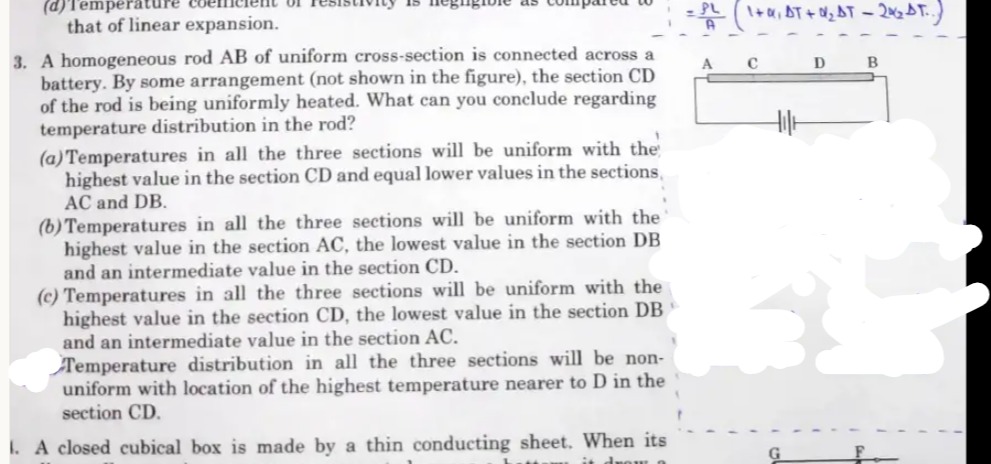Question
Question: A homogeneous rod AB of uniform cross-section is connected across a battery. By some arrangement (no...
A homogeneous rod AB of uniform cross-section is connected across a battery. By some arrangement (not shown in the figure), the section CD of the rod is being uniformly heated. What can you conclude regarding temperature distribution in the rod?

Temperatures in all the three sections will be uniform with the highest value in the section CD and equal lower values in the sections, AC and DB.
Temperatures in all the three sections will be uniform with the highest value in the section AC, the lowest value in the section DB and an intermediate value in the section CD.
Temperatures in all the three sections will be uniform with the highest value in the section CD, the lowest value in the section DB and an intermediate value in the section AC.
Temperature distribution in all the three sections will be non-uniform with location of the highest temperature nearer to D in the section CD.
Temperature distribution in all the three sections will be non-uniform with location of the highest temperature nearer to D in the section CD.
Solution
The rod experiences Joule heating throughout and external heating in section CD. Heat is lost to surroundings and conducted along the rod. Due to these factors, temperature gradients will exist, making the temperature distribution non-uniform in all sections. This eliminates options (a), (b), (c).
Section CD, being externally heated, will have the highest temperature. The asymmetry in the peak temperature location (nearer to D) can be explained by the Thomson effect. If current flows from A to B and the Thomson coefficient is positive (common for metals), heat is absorbed in section AC (where temperature increases in current direction) and generated in section DB (where temperature decreases in current direction). This makes AC effectively cooler and DB effectively hotter, causing the peak temperature within CD to shift towards D.
